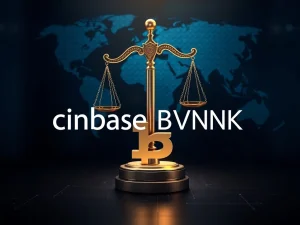SEC Staking Guidance: A Positive Breakthrough for US Crypto Policy

The recent announcement from the Securities and Exchange Commission (SEC) regarding staking guidance marks a potentially significant moment for the cryptocurrency industry in the United States. It suggests a growing recognition within the regulatory body that understanding the underlying technology is crucial for effective policy. This shift could be a turning point, fostering blockchain innovation domestically rather than pushing it offshore.
Understanding the Shift in SEC Staking
For years, the application of the Howey test to staking activities has been a point of contention. Critics argued that treating all forms of staking as securities transactions failed to account for the technical nuances of different blockchain protocols. The SEC’s May 2025 guidance acknowledges that some specific protocol staking activities may fall outside the traditional definition of securities, offering a crucial signal to the market.
Key distinctions now being considered include:
- Non-custodial Staking: Where tokenholders retain control of their assets while delegating to validators who perform technical services.
- Protocol-Native Staking: Where rewards are defined by the network’s consensus mechanism, not discretionary payments.
- Custodial or Pooled Models: Often resemble traditional yield products, which are more likely to be viewed as securities.
This differentiated framework is vital. Applying extensive securities compliance burdens designed for financial instruments directly to open-source infrastructure risks hindering validator activity and stifling growth.
Why Technical Understanding Matters for Crypto Regulation
Effective crypto regulation isn’t just about legal interpretation; it requires a deep dive into how the technology works. The SEC’s latest language reflects dialogue between regulators and those building blockchain systems.
This engagement involved explaining:
- Validator operations
- Staking mechanics at the protocol level
- The difference between securing a network and investing for profit
When regulators engage with lawyers and engineers, policy becomes more grounded in reality. While this doesn’t eliminate enforcement risk, especially for platforms blending staking with financial promises, it shows a willingness to consider technical realities.
Boosting Blockchain Innovation in the US
The market impact of this nuanced approach to SEC staking is substantial. It provides US-based developers and validators with clearer legal standing. It also signals to institutional players that compliant infrastructure development is possible within the US.
Commissioner Hester Peirce has long advocated for evaluating blockchain services based on their actual design. This guidance aligns with that view, implicitly acknowledging that not every staking model involves a ‘promoter’ or a promise of guaranteed profits simply because it offers a token-based reward.
Skeptics may argue any token reward is a financial return. However, staking rewards are often protocol emissions tied to network participation, akin to system maintenance payments, not equity investments. Recognizing this distinction is fundamental to understanding decentralized infrastructure.
Shaping US Crypto Policy Through Collaboration
Building smarter US crypto policy involves interpreting existing laws with a full understanding of the underlying technology. Recognizing when activities like non-custodial staking don’t meet the securities transaction threshold, despite surface-level similarities to financial activity, is key.
The SEC’s statement is not a complete safe harbor. However, it indicates that technology-specific engagement is happening. The SEC appears prepared to continue differentiating between infrastructure participation and investment activities.
This approach mirrors the early internet era, where regulators had to learn alongside technologists. Crypto will evolve from niche to mainstream, but only if policymakers take the time to understand blockchain systems.
Staking Guidance: A Step Towards Smarter Regulation
The recent staking guidance from the SEC represents progress. It shows that genuine, tech-savvy engagement can lead to more intelligent policy outcomes. For innovation to thrive, regulators and the industry must continue their dialogue, focusing not just on legal arguments but on real-world technological education.
Conclusion: The SEC’s evolving stance on staking is a hopeful sign for the future of crypto regulation in the US. By acknowledging the technical differences in staking models, the agency demonstrates a willingness to adapt existing frameworks to modern technology. This approach is essential for fostering domestic blockchain innovation and building clearer, more effective US crypto policy.
Opinion by: Margaret Rosenfeld, chief legal officer of Everstake. This article is for general information purposes and is not intended to be and should not be taken as legal or investment advice. The views, thoughts, and opinions expressed here are the author’s alone and do not necessarily reflect or represent the views and opinions of Crypto News Insights.







